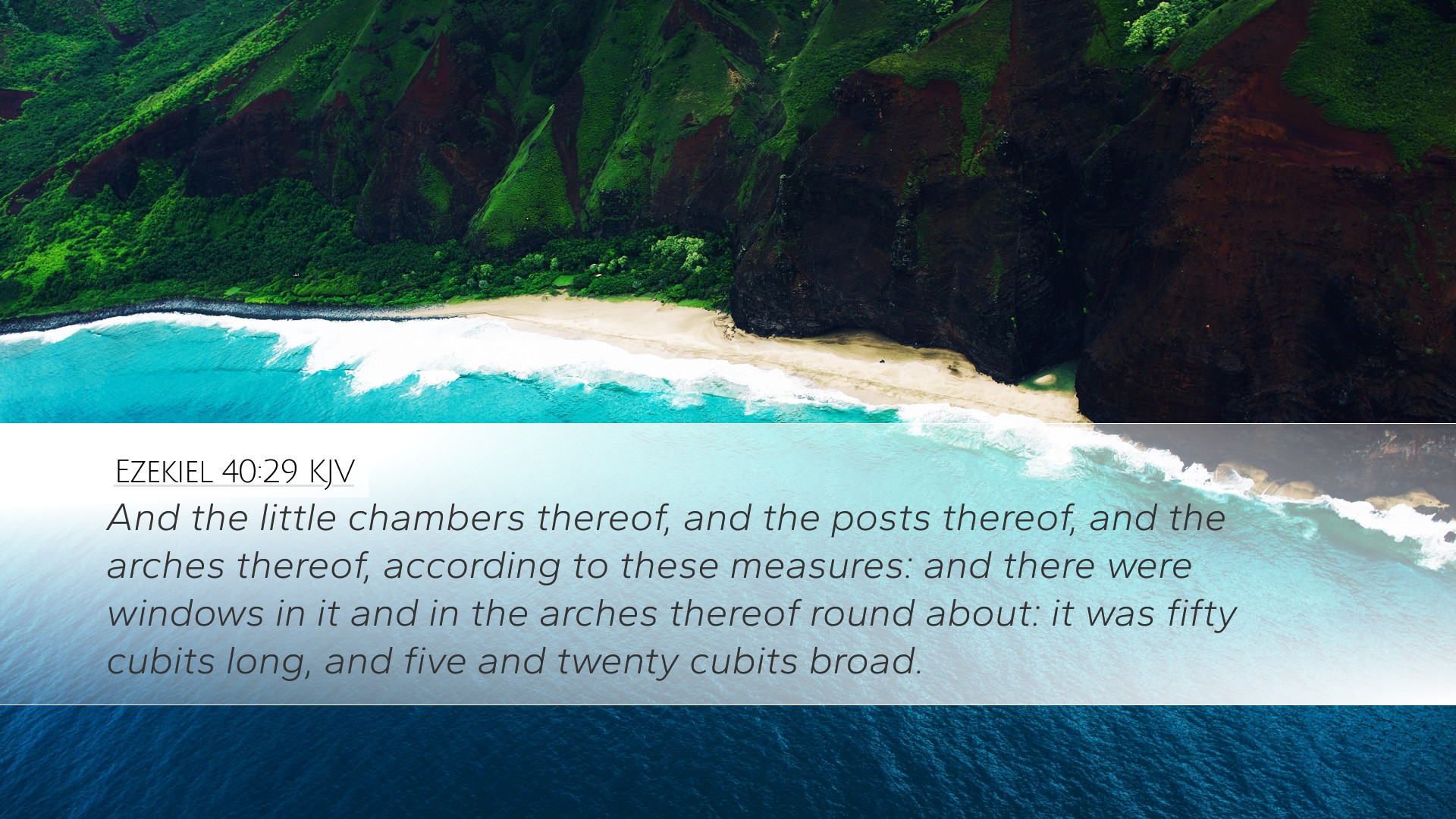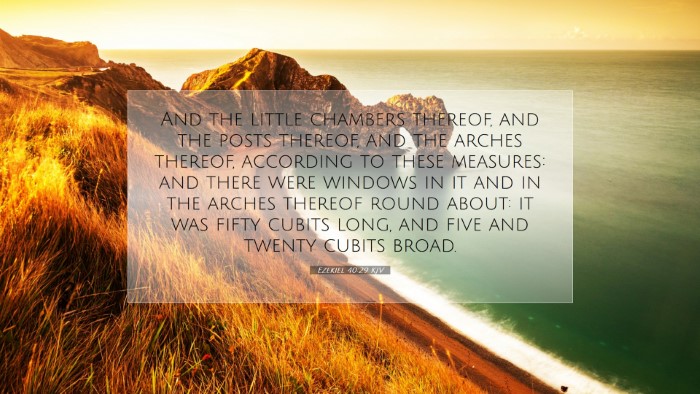Bible Commentary on Ezekiel 40:29
Ezekiel 40:29 states: "And the little chambers thereof were three on this side and three on that side: they had a palm tree in the midst of them on both sides; and the going up to it had eight steps." This verse is part of Ezekiel's vision of the new temple and provides rich imagery and implications for theological reflection.
Contextual Overview
Ezekiel chapters 40-48 detail a prophetic vision given to Ezekiel during the Babylonian exile. This vision portrays the restoration of Israel and the future temple in Jerusalem, symbolizing the rejuvenation of worship and community in God's presence.
Understanding the Verse
This verse focuses on the architectural details of the chambers surrounding the temple. The mention of the palm trees and the steps emphasizes both beauty and sacredness in the temple design.
Architectural Significance
According to Matthew Henry, the careful design of the chambers indicates divine order and perfection in worship. The symmetry of "three on this side and three on that side" suggests stability and the importance of balance in spiritual matters.
Symbolism of the Palm Trees
The palm tree is loaded with significance in biblical literature, symbolizing victory, peace, and eternal life. Albert Barnes notes that the presence of palm trees within the sacred space signifies the joy and flourishing that comes from being in communion with God.
The Eight Steps
The eight steps leading to the chambers might symbolize the spiritual journey required to approach God. As Adam Clarke observes, the number eight often represents a new beginning or resurrection in biblical numerology, indicating the transformative power of entering this holy space.
Theological Reflections
This verse provides profound insight into God's desire for a communal worship space that is both awe-inspiring and deeply functional for the spiritual life of His people.
God’s Presence Among His People
The chambers and their detailed design manifest God’s intention to dwell among His people. As emphasized in alluded writings by these commentators, this presence is not merely physical but embodies a spiritual reality—God longs for His people to experience His nearness.
Worship and Reverence
The specific architectural elements, including the palm trees and chambers, remind us of the beauty and reverence needed in our worship practices. Correct worship spaces facilitate a deeper connection with the divine, reflecting the intentionality prescribed in Ezekiel's design.
Practical Application for Today
For pastors and leaders today, Ezekiel 40:29 serves as a reminder to create environments conducive to worship and spiritual growth. Consider the spaces used for worship; they should reflect balance, beauty, and sacredness appropriate for meeting God.
- Creating Sacred Spaces: Emphasize the importance of thoughtfully designed worship spaces.
- Encouraging Joyful Worship: Utilize symbols (like palm trees) that evoke joy and life in God's presence.
- Fostering Community: Involve congregants in the design of worship experiences that invite a sense of belonging.
Conclusion
Ezekiel 40:29 underscores the significance of thoughtful worship environments and the beauty of God's design for His people’s relationship with Him. In studying this passage alongside insights from Matthew Henry, Albert Barnes, and Adam Clarke, we unveil layers of meaning that enrich our understanding of sacred architecture and its spiritual implications. As we build our own structures for worship, let us remember the divine principles exhibited in Ezekiel's vision—a balance of beauty, reverence, and accessibility.


